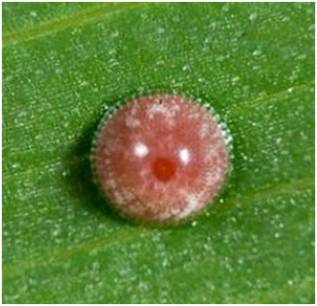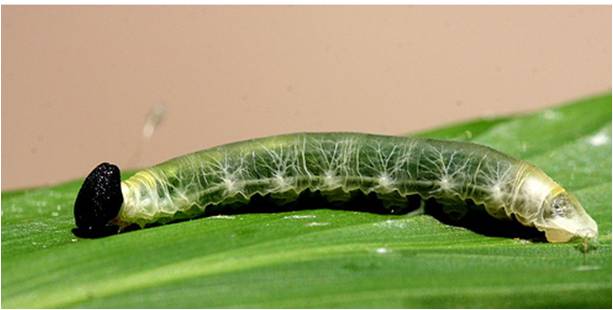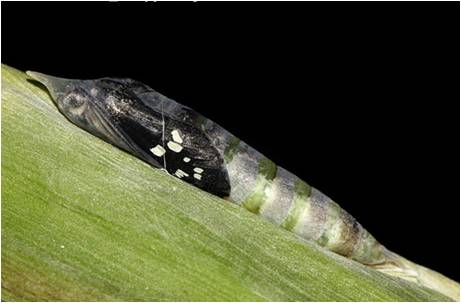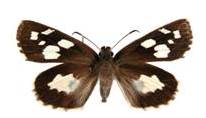
| Home |
GINGER |
MAJOR PESTS |
| 1. Shoot borer |
| 2. Rhizome scale |
| 3. Skipper Butterfly |
| 4. Rhizome maggot |
| 5. Bihar Hairy Caterpillar |
| 6. Thrips |
| Questions |
| Download Notes |
PEST OF GINGER :: MAJOR PESTS :: SKIPPER BUTTERFLY
 |
 |
 |
Udaspes folus |
Udaspes folus |
Udaspes folus |
 |
Udaspes folus |
Distribution and status: Thoughout India. Very common pest.
Host range: Turmeric, ginger, arrow root, cardamom and wild lily.
Damage symptoms:
Larvae webs leaves with silken threads, fold the leaves into a tubular form and feed on them
Bionomics: The adult is a brownish-black butterfly with 8 white spots on forewings and one large patch on hindwing. The full-grown larva is dark-green and measures 36 mm in length. A female lays about 50 eggs on underside of the leaves which hatch in 3-4 days. The larva undergoes 5 instars during 12-21 days and pupates in leaf-fold for 6-7 days. The smooth green colour larva with a black head pupates in December and emerges only in March. Longevity of males and females are 4 and 67 days respectively. The insect is present in abundance during August to October.
Management
- Hand pick and destroy the caterpillars
- Apply carbaryl 50 WP 1.0 kg or malathion 50 EC 1.0 L in 500 -750 L of water per ha.